Remington 700 SPS Varmint 243 Win 4 Round Bolt Action Rifle, Fixed Overmolded Grip Panels – 84217 For Sale
$626.98
The Remington 700 SPS Varmint 243 Win Bolt Action Rifle, model 84217, is a top-tier choice for varmint hunting, celebrated for its precision and reliability. Built on the robust Model 700 action, it features a 26-inch heavy contour barrel, optimized for high-velocity calibers and exceptional shooting performance. Its ergonomically designed black synthetic stock with a vented beavertail fore-end enhances grip, reduces weight, and improves heat dissipation. The rifle’s non-reflective matte blued finish ensures stealth, while it comes equipped with a hinged floorplate magazine, sling swivel studs, and a scope-ready drilled and tapped receiver. Standard features include an X-Mark Pro externally adjustable trigger and a SuperCell recoil pad, offering a customizable and comfortable shooting experience, making it highly effective against any varmint in its sights.
What is the difference between 700 sps and sps varmint?
The primary difference between the Remington 700 SPS (Special Purpose Synthetic) and the Remington 700 SPS Varmint lies in their intended use and certain design features tailored to that use:
1. **Intended Use:**
– **700 SPS:** This model is designed as a versatile, general-purpose hunting rifle. It’s intended for a broad range of shooting activities.
– **700 SPS Varmint:** This model is specialized for varmint hunting, which requires more precision over longer distances.
2. **Barrel:**
– **700 SPS:** Typically, it has a standard barrel length and profile suitable for various types of hunting.
– **700 SPS Varmint:** It usually features a heavier, longer barrel designed for increased accuracy and to minimize barrel heating over long shooting sessions.
3. **Stock:**
– **700 SPS:** Comes with a standard synthetic stock.
– **700 SPS Varmint:** Often equipped with a wider, more stable stock that provides better support for bench shooting.
Overall, the SPS Varmint’s enhancements, like the heavier barrel, are tailored to increase accuracy and performance during varmint shooting compared to the standard SPS model.
Does the Remington 700 sps varmint have a heavy barrel?
Yes, the Remington 700 SPS Varmint features a heavy barrel, which is designed to enhance accuracy by reducing barrel vibration and heat distortion during extended shooting sessions.
What does SPS mean in Remington?
In the context of Remington firearms, “SPS” typically stands for “Special Purpose Synthetic.” This designation refers to a series of firearms, such as rifles or shotguns, that are designed with synthetic stocks, often for enhanced durability and resistance to harsh environmental conditions.
Is the Remington 700 sps varmint short action?
Yes, the Remington 700 SPS Varmint is available in short action.
Why do varmint rifles have heavy barrels?
Varmint rifles typically have heavy barrels for several important reasons. First, the additional weight of a heavy barrel helps reduce recoil, making it easier for the shooter to maintain accuracy during rapid shots. Second, heavy barrels tend to heat up more slowly and cool down more evenly than lighter barrels, which enhances accuracy by reducing the warping or changes in barrel harmonics that can occur with temperature fluctuations during extended shooting sessions. Additionally, the increased mass provides greater stability, helping to improve precision and consistency when aiming at small, distant targets typical in varmint hunting. Overall, heavy barrels contribute to the reliability and accuracy required for targeting small, fast-moving animals over varying distances.
How long is a Remington 700 SPS varmint?
The Remington 700 SPS Varmint typically has an overall length of approximately 46.5 inches (118.1 centimeters), but this can vary slightly with different models and configurations.
What is a varmint profile barrel?
A varmint profile barrel is a type of gun barrel designed specifically for precision shooting, particularly at small game or “varmints” such as rodents or other small animals. These barrels are typically heavier and have a thicker contour compared to standard hunting rifle barrels. The primary reason for the heavier barrel is to increase accuracy by reducing barrel vibrations and enhancing heat dissipation during rapid or repeated firing. This increased mass helps to stabilize the rifle and maintain consistent accuracy over longer shooting sessions. The extra weight can also contribute to steadier aiming, which is beneficial when precision is critical.
Does the Remington 700 SPs have a threaded barrel?
Yes, the Remington 700 SPS (Special Purpose Synthetic) model does offer variants with a threaded barrel. However, not all SPS models come with a threaded barrel, so it’s important to check the specifications for the particular variant you are interested in to confirm whether it has this feature.
What is the difference between ADL and BDL on Remington 700?
The primary differences between the Remington 700 ADL (Average Deluxe) and BDL (Better Deluxe) models are in their features and design finishes.
1. **Stock Design**:
– The ADL typically features a plain, non-fancy synthetic or hardwood stock without a floorplate on the bottom of the rifle, meaning it has a blind magazine that loads from the top.
– The BDL has a more refined stock, usually with a higher-quality finish such as walnut wood, and includes a hinged floorplate for easier unloading.
2. **Magazine System**:
– The ADL lacks a hinged floorplate, requiring rounds to be cycled through the action to unload the magazine.
– The BDL’s hinged floorplate allows for faster and easier unloading of the magazine simply by opening it.
3. **Sight Features**:
– The ADL may come with simpler iron sights or no sights at all, as it is often intended to be fitted with aftermarket optics.
– The BDL typically includes more detailed iron sights and a front sight hood as part of its features.
4. **Overall Aesthetic and Finish**:
– The BDL generally offers a higher level of aesthetic appeal, with features like a raised cheekpiece on the stock and other cosmetic upgrades.
These differences cater to varied preferences and needs of hunters and shooters who might prioritize functionality and simplicity (ADL) or aesthetics and convenience (BDL).
What is the difference between Nosler ballistic tip varmint and Varmageddon?
Nosler Ballistic Tip Varmint and Varmageddon are both lines of bullets designed for varmint hunting, but they have some differences in construction and intended performance:
1. **Nosler Ballistic Tip Varmint:**
– These bullets feature a polymer tip that helps with aerodynamics and initiates rapid expansion upon impact.
– They have a tapered jacket design which aids in controlled expansion and fragmentation, making them highly effective for quick kills.
– The core is designed to deliver high energy transfer and ensure consistency in performance.
– This line is known for its high accuracy, flat trajectory, and rapid expansion.
2. **Varmageddon:**
– Varmageddon bullets also feature a design aimed at rapid fragmentation for effective varmint control.
– They typically have a hollow point or a metallic tip rather than a polymer tip.
– These bullets are specifically engineered to fragment violently upon impact, providing a wide wound channel and preventing over-penetration.
– Varmageddon is often marketed as a more affordable option compared to the Ballistic Tip, while still maintaining good accuracy and performance.
In summary, while both serve a similar purpose in terms of varmint hunting, the main differences lie in the tip design, construction details, and sometimes price point, with Ballistic Tip Varmint focusing on high precision and Varmageddon offering aggressive fragmentation.
What are varmint rounds?
Varmint rounds are types of ammunition specifically designed for hunting small pest animals, often referred to as varmints. These rounds are typically used to control populations of small, nuisance wildlife such as rodents, rabbits, and other similar animals. Varmint rounds are characterized by their high velocity and accuracy, which allow for effective long-range shooting. They often feature lightweight, rapidly-expanding bullets that minimize damage to valuable pelts or reduce the risk of ricochet. Common calibers for varmint hunting include .22-250, .204 Ruger, and .223 Remington, among others.
What is a varmint rifle stock?
A varmint rifle stock refers to the specific design or component of a rifle that is customized for varmint hunting, which involves targeting small and often fast-moving animals considered pests, such as rodents or coyotes. These stocks are typically designed to enhance accuracy and stability, featuring attributes like a comfortable ergonomic shape, improved grip, and provisions for mounting accessories such as bipods or scopes. The materials used are often selected for durability and light weight.
What is the difference between Marlin SBL and trapper?
The primary difference between the Marlin SBL and the Trapper versions lies in their specifications and intended uses:
1. **Marlin 1895 SBL (Stainless Big Loop):**
– **Caliber:** Typically chambered in .45-70 Government.
– **Material:** Features a stainless steel construction for enhanced durability and weather resistance.
– **Barrel Length:** Generally has a longer barrel, usually around 18.5 inches.
– **Stock:** Often equipped with a laminate stock.
– **Features:** Includes a large loop lever for easier use with gloves, a full-length tubular magazine, and can have additional features like a rail for optics and ghost ring sights.
– **Purpose:** Designed for rugged, outdoor use with a focus on reliability and durability against harsh environments.
2. **Marlin 1895 Trapper:**
– **Caliber:** Also typically available in .45-70 Government.
– **Material:** May come in both stainless and blued versions.
– **Barrel Length:** Usually has a shorter barrel, approximately 16 inches.
– **Stock:** Can vary from traditional to modern styled stocks.
– **Features:** Smaller in overall size, making it lighter and easier to maneuver. Typically lacks extensive rails and is more stripped down compared to the SBL.
– **Purpose:** Designed for ease of portability and maneuverability, well-suited for environments where a compact firearm is advantageous.
Both rifles are lever-action and cater to different needs based on their size, materials, and features. The choice between the two often depends on personal preference and intended use, whether for hunting, sport shooting, or survival scenarios.
| Product Line | 700 SPS Varmint |
|---|---|
| Action | Bolt |
| Stock | Fixed Overmolded Grip Panels |
| Trigger Type | X-Mark Pro |
| Muzzle Type | Crowned |
| Twist | 1 |
| Hand Orientation | Right |
| Safety | Manual |
| Barrel Material | Carbon Steel |
| Receiver Material | Steel |
| Stock Material | Synthetic |
| Barrel Finish | Matte Blue |
| Stock Finish | Matte Black |
| Length of Pull | 13-3/8" |
| Overall Length | 46-1/2" |
| Drop at Comb | 1-1/8" |
| Drop at Heel | 1-3/8" |
| Barrel Type | Heavy Contour |
Be the first to review “Remington 700 SPS Varmint 243 Win 4 Round Bolt Action Rifle, Fixed Overmolded Grip Panels – 84217” Cancel reply
Related products
Remington 700 SPS Varmint
Remington 700 SPS Varmint 223 Rem 5 Round Bolt Action Rifle, Fixed Overmolded Grip Panels – 84215
Remington 700 SPS Varmint
Remington 700 SPS Varmint 22-250 Rem 4 Round Bolt Action Rifle, Fixed Overmolded Grip Panels – 84226
Remington 700 SPS Varmint
Remington 700 SPS Varmint 223 Rem 5 Round Bolt Action Rifle, Fixed Overmolded Grip Panels – 84227
Remington 700 SPS Varmint
Remington 700 SPS Varmint
Remington 700 SPS Varmint 204 Ruger 5 Round Bolt Action Rifle, Fixed Overmolded Grip Panels – 84214
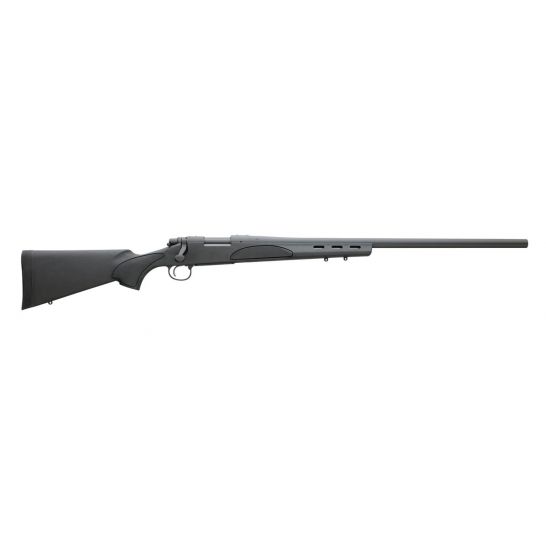
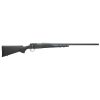
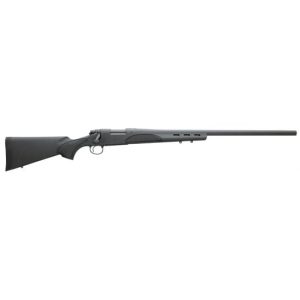
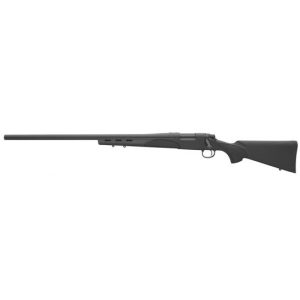
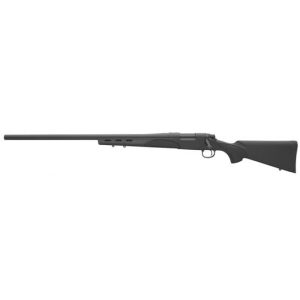

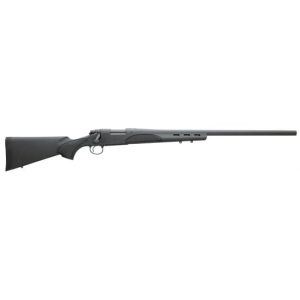
Reviews
There are no reviews yet.